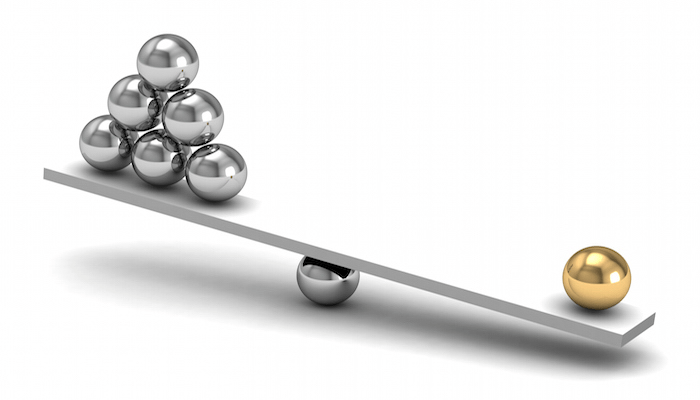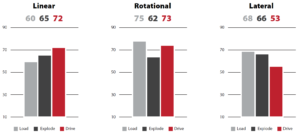
Previously we set the stage for the discussion of our philosophy. We defined philosophies as ‘an approach for making sense out of complexity.’ They are based on key principles or fundamental beliefs that serve as our foundation. Here, we will discuss the first principle of the Sparta philosophy: Assessment.
as·sess·ment noun
the evaluation or estimation of the nature, quality, or ability of someone or something.
The basic concept of assessment is hardly a contentious issue. However, once you dig into the details of what qualifies a valid assessment, many people start to disagree. Physical assessment is a good place to start since it forms the foundation for all technical skills and tactical execution. Physical preparation, readiness, and resilience are all key components of health and performance for all individuals.
When it comes to assessing physical capacity, force production is fundamental. The basis of all movement starts with our interaction with the ground. Because we all live on the Earth, we are all bound by the forces of gravity. Our ability to move is best described using physics and the fundamental laws derived by Sir Isaac Newton. We have often discussed how the muscles’ ability to produce force can explain all human movement, in sport and otherwise.
With assessment being one of the services we provide, countless previous articles have discussed the topics of reliability and validity. These concepts should be at the core of any assessment, yet many coaches and practitioners continue to overlook the importance of reliability and validity in testing and new technologies. The specific testing protocols we utilize are reliable and valid tests of force production, and form the foundation of a comprehensive assessment of an athlete’s physical qualities. Robust assessment can be used to prioritize an athlete’s needs and prescribe treatments, as well as monitor progress and validate training.
Furthermore, the goal of force expression is to meet the demands of the task or sport, as well as maintain readiness and resilience. This requires not just an assessment of quantity of force production, but quality as well. Quality of force production is related to movement efficiency which leads to less “drag” – wear and tear on the body and wasted energy. Less efficient movers will have to utilize much more energy for similar output and can often develop chronic issues because of these inefficiencies. Simply put, the cost of doing business for less efficient movers is much higher.
As strength and conditioning coaches, it is easy to get distracted by the biases within our realm of expertise and base assessment of athletes solely on their 1RM strength, lifting ability, or work capacity. These quantitative measures are often prioritized based on habit and simple interpretation. Sports reward outcome, and athletes are results-based. As a result they find a way to “accomplish the task,” often at the cost of efficiency. They may move the weight or finish the drill in the short term, but accumulate significant wear and tear on their bodies and waste a lot of energy in the long term. Two different individuals may achieve the same results, utilizing two very different solutions to do so.
The prioritization of movement quality is a trend that has been growing in recent years, however clear definitions and objective measures have been lacking. The Sparta Scan and Movement Signatures are unique in their approach to objectively quantify the quality of force production as it relates to performance and health. This gives practitioners who really believe in the importance of movement quality and want to make it the goal of their program a way to quantify results.

Of final importance for the assessment of force is specificity. Specificity refers to the velocity, vector, and range of motion required by the task at hand. Quality force production must be able to be applied according to these specific factors. This is where Movement Signatures become so valuable. The relationships between Load, Explode, and Drive represented by different Movement Signatures give insight into velocity, vector, and range of motion strengths and weaknesses for each individual. These can then be used to understand any individual’s unique abilities based on the demands of their position, sport, or task.
Assessment is principal. Force is fundamental. Consistent objective assessment of force production can be used to provide insight into not just physical capacity, but movement quality, efficiency, and specificity.
Stay tuned as we continue to cover the key principles that make up our philosophy: assessment, intent, and a systems approach. Subscribe to our blog below to make sure you don’t miss out!